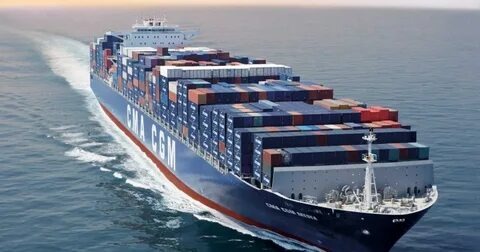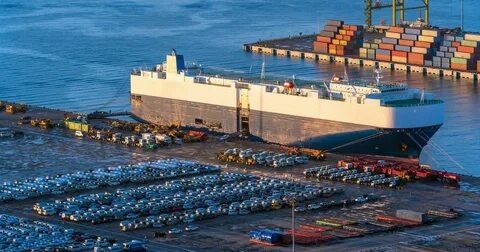
How to Prepare Your Car for Shipping
Preparing Your Car for International Shipping: A Comprehensive Guide
Shipping your vehicle internationally is a significant undertaking, and proper preparation is paramount to ensure its safe arrival and to avoid costly complications. This guide provides a detailed walkthrough of the steps you need to take before your car embarks on its journey, covering everything from essential documentation and cleaning to specific requirements for RoRo and container shipping.
Understanding Shipping Methods and Their Preparatory Needs
Before you begin preparing your vehicle, it’s important to understand the nuances of the shipping methods we offer, as preparation can differ:
- RoRo (Roll-on/Roll-off) Shipping
- How it works: Your car is driven onto a specialized vessel, similar to a ferry, and secured in a designated car deck.
- Preparatory Needs: This method requires your vehicle to be in fully operational condition. Critically, no personal belongings or any other items are permitted inside the vehicle during RoRo shipping. This is a strict rule enforced by shipping lines for safety and regulatory reasons.
- Learn More: For more details on this service, please visit our RoRo Shipping page.
- Container Shipping (Dedicated and Shared)
- How it works: Your vehicle is loaded into a shipping container. This can be a dedicated container solely for your vehicle or a shared container with other vehicles.
- Preparatory Needs:
- Vehicles do not need to be in working order for container shipping.
- You can ship personal belongings within a dedicated container alongside your vehicle, subject to destination country regulations and item restrictions. However, for shared containers, shipping personal effects is generally not permitted due to space constraints and the need for equitable distribution of space.
- Heavy items should not be placed on seats within the container, as this can cause damage to the upholstery or the seat structure during transit. Distribute weight carefully and secure all items.
- Learn More: Discover more about our container shipping options on our Container Shipping page.

Essential Preparations for Your Vehicle
Regardless of the shipping method chosen, several key preparations are necessary:
-
Deep Cleaning: Inside and Out
A thorough clean is not just for aesthetics; it’s a crucial step for international shipping.
- Exterior Wash and Wax: Clean the exterior to remove dirt, grime, and road salt. This helps to prevent corrosion during transit and makes any pre-shipment inspection easier. A good wax offers an additional layer of protection.
- Interior Cleaning:
- Remove all personal belongings, valuables, and clutter. This is mandatory for RoRo and highly recommended for container shipping, even if you plan to ship some items.
- Vacuum the carpets and upholstery.
- Clean all surfaces, including the dashboard, door panels, and console.
- Mould Prevention: If your car has been exposed to damp conditions, ensure the interior is thoroughly dried. Mould can develop if the car is wet inside during transit, especially in humid conditions. Consider using dehumidifying products if necessary.
- Engine Bay: Clean the engine bay to remove any oil or grease build-up.
- Underbody: Clean the underside of the vehicle to remove any mud, dirt, or vegetation that could be a biosecurity risk at the destination port.
-
Battery Check and Maintenance
- Battery Might Be Drained: For security and to prevent accidental activation of alarms, shipping companies often disconnect the vehicle’s battery or advise that it might be drained during transit. Ensure your vehicle’s battery is in good condition. A weak battery might not hold a sufficient charge after disconnection.
- Antifreeze: Ensure your vehicle’s antifreeze is at the correct level and suitable for the expected temperatures during transit to prevent freezing.
-
Fuel Level
- Minimal Fuel: Do not fill the fuel tank. For safety reasons, vehicles must have a minimal amount of fuel – typically just enough to drive the vehicle onto the ship or into the container. A quarter of a tank or less is usually sufficient.
-
Fluid Levels and Leaks
- Check All Fluids: Ensure all fluid levels (oil, coolant, brake fluid, power steering fluid) are at the recommended levels.
- Check for Leaks: Address any fluid leaks before shipping. Leaking fluids can contaminate other vehicles, damage the ship or container, and pose a safety hazard.
-
Vehicle Inspections
- Pre-Shipment Condition Report: We highly recommend a condition report. This is a documented record, often with photographic evidence, of your vehicle’s condition before it is loaded.
- Benefit: This is crucial for insurance purposes. In the event of damage during transit, the report serves as evidence of the vehicle’s state before shipping.
- Cost: The condition report is free of charge if we collect your vehicle. If you choose to deliver the vehicle to us, we will charge £35 for the condition report.
- Mandatory Inspections: Some destination countries require specific inspections before shipment. For instance, Tanzania mandates a Clean Report of Findings (CRF) from an approved agency before the vehicle can be shipped. Always check the specific requirements of your destination country.
-
Mechanical Checks
- Operational Vehicle (RoRo): If shipping via RoRo, ensure your vehicle is in full working order. Brakes, steering, and engine must be functional.
- Non-Working Vehicles (Container): If your vehicle is not working, container shipping is the only viable option. We can arrange for winching the vehicle into the container.

Documentation Requirements
Correct paperwork is non-negotiable for international car shipping.
Documentation Required in the UK
- Vehicle Registration Certificate (V5C): This is your primary proof of the vehicle’s identity and ownership in the UK.
- Proof of Ownership: If you have recently purchased the vehicle, a Bill of Sale or similar document may be required.
- Identification: A copy of your passport or driving license is typically needed.
- Shipping Booking Confirmation: Details of your chosen shipping service and payment.
- Export Declaration: Required for all goods leaving the UK, which our team will handle.
Documentation Required at the Destination Port
The exact documentation required at the destination port varies significantly by country. However, common requirements often include:
- Bill of Lading: The primary document of title for the shipment, issued by the shipping company.
- Customs Declaration Forms: Specific to the destination country, completed by your appointed clearing agent.
- Proof of Ownership: Original V5C and Bill of Sale.
- Identification: Passport or relevant identification.
- Transfer of Residence (ToR) Documentation: If you are eligible for duty exemptions as part of a relocation, this documentation is critical and must often be obtained before shipping.
- Import Permit: Some countries require an import permit, which may need to be secured in advance.
- Certificate of Roadworthiness: Required for permanent imports in many countries.
- Proof of Insurance: Insurance valid in the destination country.
It is essential to consult with your destination country’s customs authority or a local clearing agent for a precise list of required documents.
Prohibited Items and Restrictions
To ensure a safe and compliant shipment, certain items are strictly prohibited or restricted:
Prohibited Items
- Hazardous Materials: Flammable liquids, explosives, corrosives, compressed gases, toxic substances, and radioactive materials are strictly forbidden.
- Illegal Substances: Drugs or any other illicit items.
- Firearms and Ammunition: Unless properly declared and licensed according to both UK export and destination country import laws.
- Perishable Goods: Food, plants, or any items that could spoil or pose a biosecurity risk.
- Asbestos: Any materials containing asbestos are prohibited.
Restrictions
- Personal Belongings:
- RoRo: Absolutely no personal belongings are allowed inside the vehicle.
- Container Shipping: For dedicated containers, personal belongings can be shipped, but they must be declared, securely packed, and comply with destination country regulations. Avoid shipping prohibited items. Heavy items should not be placed on seats, and fragile items should be well-protected.
- Shared Containers: Shipping personal belongings is generally not permitted due to space limitations and the need for equitable distribution.
- Fuel: Tanks must be nearly empty.
- Vehicle Condition: As mentioned, RoRo requires a working vehicle. Non-working vehicles can only be shipped via container.
- Hybrid and Electric Vehicles: These are not allowed on RoRo services. They are permitted on container services, but electric vehicles typically incur a hazard surcharge of £295 due to battery regulations.
For detailed restrictions specific to your destination country, please consult with us or your destination agent.
Insurance and Risk Coverage
Protecting your investment during international transit is vital. We offer the following insurance options:
- Total Loss Cover: This insurance covers the total loss of your vehicle due to fire or water damage during transit. The cost is 1% of the vehicle’s value plus the shipping cost.
- Comprehensive Cover: This offers broader protection, including cosmetic damage, in addition to total loss from fire or water damage. The cost is 1.5% of the vehicle’s value plus the shipping cost.
- Eligibility: This cover is only available for vehicles no older than 10 years.
- Condition Report: A condition report is required for comprehensive cover. As mentioned, this is free if we collect your vehicle, or £35 if you deliver it to us.
Vehicle Collection in the UK
We offer flexible collection options for your vehicle within the UK:
- Transporter: Your vehicle can be collected by our professional transporters and delivered to the port.
- Trade Plate Driver: If your vehicle is fully operational and has a valid MOT, it can be driven to the port by one of our experienced drivers using trade plates.
Further Resources and Mistakes to Avoid
To further assist you in your international car shipping journey, we recommend the following resources:
- Prepare Your Car for Export
- How to Avoid Damage with International Shipping
- Top 10 Mistakes People Make During International Car Shipping
By meticulously following these preparation steps, you can significantly contribute to a smooth and successful international car shipping experience. Please do not hesitate to contact us if you have any questions or require further assistance.







